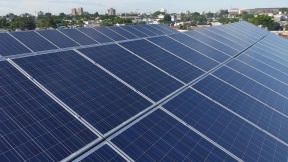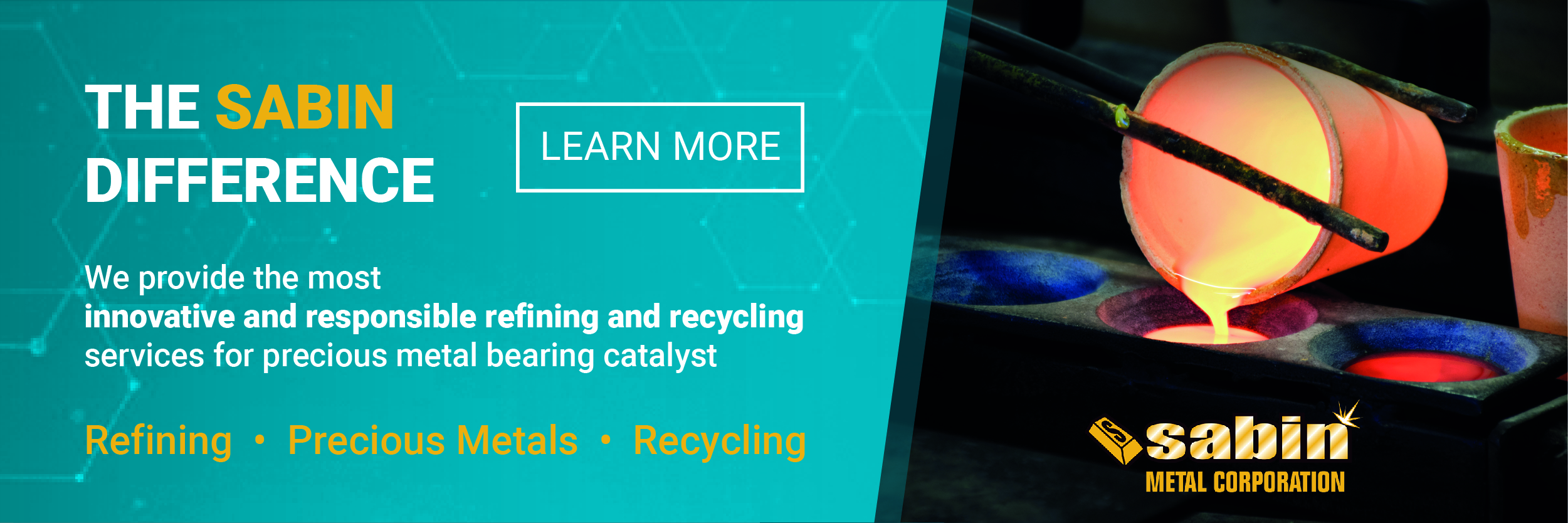Oilfield & Energies
Good day sunshine! 11th June 2018
By Michael Smith
We look at some of the recent advances in photovoltaics technology that are making solar power more efficient and less expen

We look at some of the recent advances in photovoltaics technology that are making solar power more efficient and less expensive.
Photovoltaics generate electric power by converting energy from the sun into a flow of electrons. While many types of photovoltaic systems are known to be effective, crystalline silicon photovoltaics account for around 90% of worldwide production. Manufacturing these systems involves numerous steps and materials, such as semi-conductor grade quartz, boron (used to make a p-type semiconductor rich in electron holes), phosphorus (which creates an N-type semiconducting surface), anti-reflective coatings (to reduce energy loss) and electrical contacts.
Thin-film photovoltaics represent the ‘next generation’ of solar technology. These are made by depositing semiconducting layers (glass or stainless-steel) on substrate (e.g. cadmium telluride [CdTe], copper indium diselenide [CIS], copper indium gallium diselenide [CIGS], amorphous silicon). By using a thin film of material to collect solar energy, manufacturers can reduce semiconductor materials utilization by as much as 98%.
The market for solar photovoltaics has grown rapidly in the past few years, with worldwide installed capacity seeing a growth factor of about 57 between 2000 and 2016.1 As demand for renewable energies rises, there is increasing focus on the manufacturing of solar cells and photovoltaic arrays – especially in terms of making them more efficient and less expensive.
Follow the sun
Photovoltaic systems have the major disadvantage that the power output is dependent on direct sunlight, so about 10-25% of power can be lost if a tracking system is not used, since the cell will not be directly facing the sun at all times. For best performance, systems aim to maximize the time they face the sun by using a solar tracker to follow the sun across the sky. By moving photovoltaic panels to follow the sun, power output can be increased by as much as 20% in the winter, and up to 50% in the summer.
Soak up the sun
The conversion efficiency of a photovoltaic cell is a physical property that represents how much electrical power it can produce. The basic expression for maximum efficiency of a cell (ɳ) is given by the ratio of output power to the incident solar power (radiation flux times area):
ɳ = Pmax / E · Acell
The market average is just 12–18%, but researchers are racing to increase the conversion efficiency of commercially-applicable cells and modules. The efficiency of silicon single-junction solar cell is intrinsically constrained to around 30%, although it is possible to overcome this limit by combining silicon with high-bandgap materials, such as III–V semiconductors, in a multi-junction device. The most efficient solar cell to date is a multi-junction concentrator solar cell with an efficiency of 46%, produced by Fraunhofer ISE in 2014.
An important development involves the use of perovskite – an inexpensive alternative to crystalline silicon. Perovskite has demonstrated efficiency as high as 21%, which is slightly above the market average, and work is ongoing to further optimize its efficiency. For example, an international research team led by the UK’s University of Cambridge recently discovered that potassium iodide ‘heals’ the defects and immobilized ion movement which, thus far, have restricted the efficiency of perovskite solar cells.2 Tandem cells composed of two perovskite layers with suitable bandgaps have a theoretical efficiency limit of 45% and a practical limit of 35% – both of which are exceed silicon’s potential. This favourable efficiency profile, combined with lower costs, while remaining environmentally benign and renewable, suggest that perovskite will play a major role in the photovoltaics market.
Away from the sun
Not all innovations relate to the photovoltaic materials themselves. A major cause of decreased performance is overheating – the efficiency of a solar cell declines by about 0.5% for every 1oC increase in temperature. Self-cooling solar cells can offer an answer, but this could be viewed as a waste of energy. Another solution is to form pyramid and cone shapes from silica, and attach them to the surface of the solar panel. This allows visible light to reach the solar cells, but reflects infrared rays (which carry heat).
Not all innovations relate to the photovoltaic materials themselves. A major cause of decreased performance is overheating – the efficiency of a solar cell declines by about 0.5% for every 1oC increase in temperature. Self-cooling solar cells can offer an answer, but this could be viewed as a waste of energy. Another solution is to form pyramid and cone shapes from silica, and attach them to the surface of the solar panel. This allows visible light to reach the solar cells, but reflects infrared rays (which carry heat).
At the end of 2017, Munich-based chemical company Wacker and Royal Tech CSP, a Chinese specialist in solar systems, received a Technology Innovation Award for a new heat-transfer medium for parabolic trough collectors.3 Most current heat-transfer media consist of aromatic hydrocarbon compounds but, because of their limited thermal load capacity, they can only be used up to about 400°C (and above 12°C). The silicone fluid that Wacker developed for the novel technology is extremely resistant to high and low temperature (up to 425°C, as low as -40 °C), allowing higher efficiencies and energy yields to be obtained. Therefore, the distinction was awarded for the efficient cost-benefit ratio provided by the silicone fluid, thanks to its heat resistance and longer service life.
House of the rising sun
Moving beyond the application of photovoltaics in solar panels or towers, innovators in this space are developing other products that turn sunlight into energy. Chemicals giant BASF is one company at the forefront of this solar evolution, incorporating thin film technology into new applications such as building-integrated photovoltaics (BIPV) – a new way of utilizing solar energy into buildings. These thin-film panels can be molded into the shape of building components to make aesthetically pleasing, but functional materials.
Photovoltaic windows comprise glass that incorporates transparent semiconductor-based photovoltaic cells, sandwiched between two sheets of glass. Photovoltaic glass is not perfectly transparent, but allows enough light to act as a conventional window while also enabling buildings to produce some of their own electricity via the windows. In very hot environments, the reduced transparency can also save on air-conditioning costs. Examples of companies innovating in this space include Onyx Solar, which makes photovoltaic glass with a variety of options including different colours, gradient and patterns, as well as double or triple-glazed products. For situations requiring more light penetration, Sharp has developed a slitted solar glass product that has gaps between solar cells. Variance in photovoltaic efficiency and light penetration among different products enables multiple options for architectural design.
Advancing on the principles of photovoltaic windows, earlier this year Berkeley researchers reported that they had tweaked the chemical structure of perovskite so that the material turns from transparent to opaque when heated, and also converts sunlight into electricity.4 While the sunlight conversion efficiency of the material — an inorganic halide perovskite with added cesium, lead, iodine and bromine — is still low and the transition from transparent window to opaque solar cell requires heating the window to the boiling point of water, the research team is working to resolve these issues, with the goal of providing the technology for power-producing smart windows for buildings, cars and display screens.
Other examples include ‘solar paint’. In theory, we could soon all be painting our houses with a product that takes care of our energy needs.5 Researchers at RMIT University in Australia have developed a unique paint containing a newly-developed compound called synthetic molybdenum-sulfide, which acts like a silica gel in that it absorbs water from the air; it also catalyzes the splitting of water atoms into hydrogen and oxygen. When mixed with titanium oxide particles, the resulting product leads to a sunlight-absorbing paint that produces hydrogen fuel from solar energy and moist air.
Organic solar cells include carbon into their structure to offer several benefits over conventional ‘inorganic’ cells. Silicon-based inorganic solar panels are expensive to manufacture – made of thick, stiff sheets that require fixed installation points. In contrast, carbon-based organic solar cells could be economically manufactured in rolls that facilitate bending and curving around structures or within clothing, transparent or coloured. Despite these benefits, organic solar cells have been deficient in the efficiency needed to contend with conventional energy sources. However, in April this year, researchers at the University of Michigan showcased organic solar cells that could attain 15% efficiency (within the current market average range).6 The system integrates specialized layers to absorb both visible and infrared light. Despite setting record efficiency for organic photovoltaics, the researchers believe they can build on this to provide even greater efficiency. The design is also scalable for industrial use.
Here comes the sun
In conclusion, technological advancements and manufacturing process improvements will probably lead to reductions in the cost of solar cell technologies in coming years. There has already been fierce competition in the supply chain, but it is likely that even further cost – as well as energy – efficiencies lie ahead. As time progresses, renewable energy technologies will almost certainly become cheaper, while fossil fuels will become more expensive.
More than 100 countries now use solar photovoltaics as an electricity source. Solar power is now, after hydro and wind power, the third most important renewable energy source in terms of globally installed capacity. China, Japan and the USA are the fastest growing markets, while Germany remains the world’s largest producer, contributing more than 7% to its national electricity demands.
Growth in the global photovoltaics market presents obvious opportunities for companies producing a broad range of technologies to serve the solar value chain. From crystalline and amorphous silicon to conductor grade quartz, and anti-reflective coatings to electrical contacts, surely demand for raw materials for solar technology can only go up.
References:
1. Haegel NM et al. Science 2017;356:141–13.
2. Abdi-Jalebi M et al. Nature 2018;555:497–501.
3. Wacker Chemie. Press release, 14th December 2017 (www.wacker.com).
4. Chemicals Knowledge Hub. News, 29th January 2018 (https://bit.ly/2MjGVGj).
5. Mogg T. Digital Trends, 14th June 2017 (www.digitaltrends.com).
6. Che X et al. Nature Energy 2018;3: 422–7.


